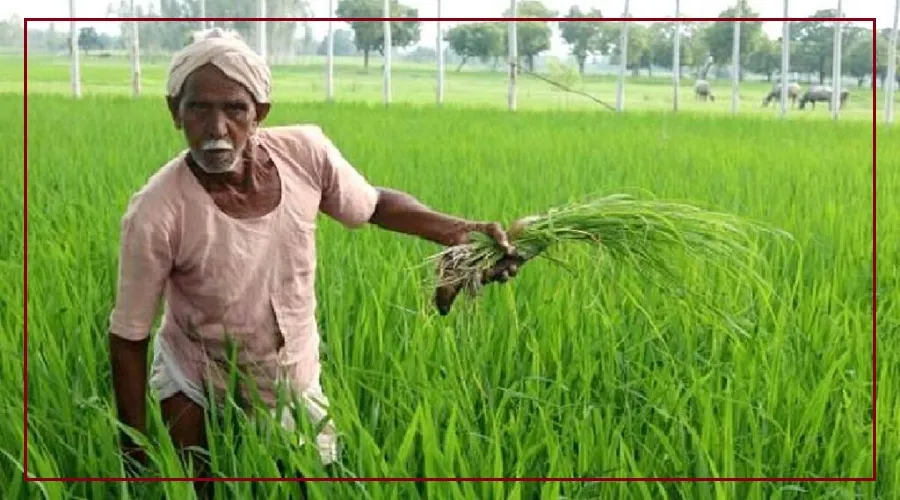On Wednesday, the government raised the minimum support price (MSP) of paddy by 5.35%, making it Rs 2,300 per quintal for the Kharif marketing year 2024-25.
This increase was made before the assembly elections in major states.
Despite having a large surplus of rice, the government increased the paddy support price by Rs 117 per quintal.
This move is significant as it precedes elections in states like Haryana, Maharashtra, Jharkhand, and Delhi.
The first big decision of Narendra Modi’s third term
Ashwini Vaishnav, the Information and Broadcasting Minister, mentioned that the hike in MSP for 14 Kharif crops marks Prime Minister Narendra Modi’s first major decision in his third term.
This reflects the government’s policy to maintain the support price at least 1.5 times the production cost.
Paddy is the primary Kharif crop,
typically sown with the start of the southwest monsoon in June and sold from October 2024 to September 2025.
MSP approved for 14 Kharif crops
Vaishnaw announced the MSP increase, stating that the Cabinet has approved the minimum support price for 14 Kharif crops as per the recommendations of the Commission for Agricultural Costs and Prices (CACP).
The minister mentioned that the total financial impact of the MSP increase is estimated at Rs 2,00,000 crore, which is Rs 35,000 crore higher than last season.
This will result in a significant rise in farmers’ income.
Vaishnav informed reporters that the MSP for ‘normal’ grade paddy has risen by Rs 117 to Rs 2,300 per quintal.
Additionally, for the ‘A’ grade variety, it has been raised to Rs 2,320 per quintal for the upcoming Kharif season.
MSP for ‘hybrid’ jowar raised by Rs 191
In cereals, the MSP for ‘hybrid’ jowar has risen by Rs 191 to Rs 3,371 per quintal, and for the ‘Maldanni’ variety, it’s increased by Rs 196 to Rs 3,421 per quintal for the marketing season of 2024-25 (October-September).
For the year 2024-25, the support price of millet has gone up by Rs 125 to Rs 2,625 per quintal, ragi by Rs 444 to Rs 4,290 per quintal, and maize by Rs 135 to Rs 2,225 per quintal.
MSP of Arhar increased by Rs 550
To lessen the country’s reliance on imported pulses, the MSP of tur has been raised by Rs 550 to Rs 7,550 per quintal, urad by Rs 450 to Rs 7,400 per quintal,
and moong by Rs 124 to Rs 8,682 per quintal for the 2024-25 Kharif marketing season.
The support price of sesame has been increased by Rs 632
In the upcoming Kharif season, the support price of sunflower seeds (oilseeds) has gone up by Rs 520 to Rs 7,280 per quintal.
Groundnut prices increased by Rs 406 to Rs 6,783 per quintal, soybean (yellow) by Rs 292 to Rs 4,892 per quintal.
Additionally, the support price of sesame has been raised by Rs 632 to Rs 9,267 per quintal, and nigerseed by Rs 983 to Rs 8,717 per quintal.
Support price of cotton increased by 501
Regarding commercial crops, the support price of cotton has been raised by Rs 501 each, reaching Rs 7,121 per quintal for the ‘medium staple’ variety and Rs 7,521 per quintal for the ‘long staple’ type.
Vaishnav emphasized that the government is addressing the entire process from seed to market with farmers’ interests in mind.
He mentioned, “In the previous terms, we laid a solid groundwork for the economy and farmers’ welfare. Building upon that foundation, we can make significant progress. Our policies remain consistent, with a continued focus on farmers.”
As per the government, farmers are expected to have the highest margin over their production cost with millets at 77%, followed by tur at 59%, maize at 54%, and urad at 52%.
The government statement mentioned that for the remaining crops, farmers are estimated to have a margin of 50% over their production cost.
FCI has a stock of 5.34 crore tonnes of rice
Currently, the Food Corporation of India (FCI) holds a record stock of about 53.4 million tonnes of rice, which is four times the required buffer and enough to meet the demand under welfare schemes for a year without any new procurement.
The Meteorological Department reports that since the monsoon season began on June 1, rainfall across the country has been about 20% below average.
Despite this, weather conditions are now favorable for the monsoon to advance.

























